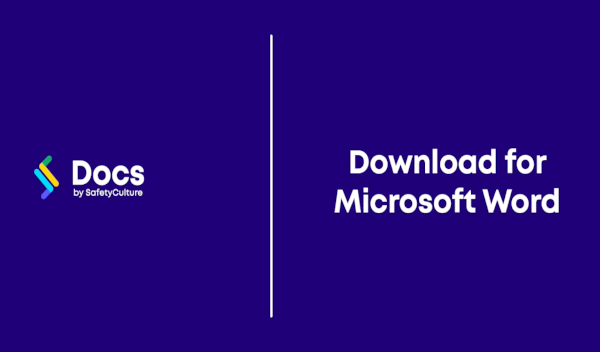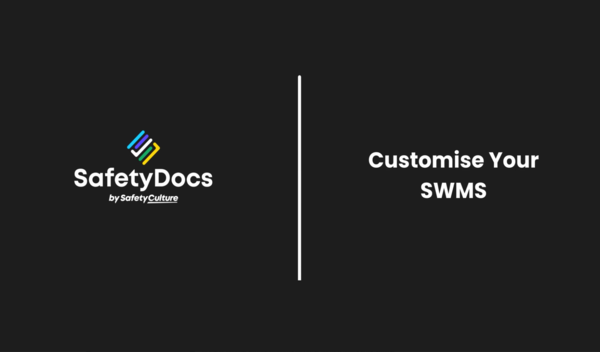Erecting Suspended Powered Scaffolds Safe Work Method Statement
- Instant Document Delivery via Email.
- Add to your existing management system.
- Can assist in ensuring workers are adequately trained.
- Customisation instructions provided.
- Microsoft Word Format (Fully editable).
- Only pay once (no subscriptions required).
Erecting Suspended Powered Scaffolds Safe Work Method Statement
This Erecting Suspended Powered Scaffolds Safe Work Method Statement (SWMS) outlines the necessary safety measures for setting up and taking down suspended powered scaffold systems, like swing stages. It details the potential hazards and control measures needed for safe operations.
Job Steps Covered in Erecting Suspended Powered Scaffolds SWMS
- Planning: Involves detailed preparation to identify potential risks and resources needed for safe scaffold setup and removal.
- Implement a Falls Emergency Rescue Plan: Emphasises the importance of having an emergency rescue plan in place for falls.
- Arrival On-site and Assess On-site Conditions: Involves assessing the site conditions upon arrival and conducting a Job Safety Analysis (JSA) if necessary.
- Work Area Set-up: Focuses on securing the work area, including establishing exclusion zones.
- Environment: Addresses environmental considerations and impacts.
- Check Weather Conditions & Prepare: Advises on weather considerations and preparations.
- Housekeeping: Highlights the importance of maintaining a clean and orderly work area to prevent slips, trips, and falls.
- Manual Tasks: Discusses the handling of materials and equipment to prevent musculoskeletal injuries.
- Working with Powered and Non-powered Tools: Covers the safe use of tools to prevent injuries and accidents.
- Pre-inspect System Components & Assembling the Platform: Components are inspected and assembled according to specifications.
- Installation of Electrical Cabling for Hoist Operations: Addresses the safe installation of electrical cabling.
- Setting-up Supports and Anchors: Focuses on the correct setup of supports and anchors to prevent falls.
- Commission and Handover: Involves inspecting and handing over the scaffold system safely.
- Dismantling: Details the systematic and safe dismantling of the scaffold system.
- On Completion: The site is secure and all equipment is safely stored upon completion of work.
- Emergency Response: Outlines a response to emergencies.
Each purchase of our SWMS comes with a complimentary copy of the Legislation & Codes of Practice Reference List, valued at $19.95. This valuable resource provides an up-to-date overview of relevant laws and standards, further supporting your compliance efforts.
Key Features of the SWMS
- Comprehensive Hazard Management: Identifies potential hazards and outlines control measures to mitigate risks.
- Height Safety Measures: Provides detailed guidelines for safely working at height, including the use of fall protection systems and secure anchoring methods.
- Standards Compliance: Safety protocols align with the latest industry standards and legal requirements, providing reliable and current safety practices.
- User-Friendly Layout: Designed to be clear and straightforward, making it easy for all team members to understand and implement the safety measures.
Who is it Suitable For?
This SWMS is essential for businesses and workers involved in the construction industry, specifically those tasked with the erection and dismantling of suspended powered scaffolds. It is suitable for:
- Scaffolders
- Construction Managers
- Safety Officers
- Site Supervisors
Equip your team with the Erecting Suspended Powered Scaffolds SWMS to encourage safe practices and effective emergency responses.
- Instant Document Delivery via Email.
- Add to your existing management system.
- Can assist in ensuring workers are adequately trained.
- Customisation instructions provided.
- Microsoft Word Format (Fully editable).
- Only pay once (no subscriptions required).
Erecting Suspended Powered Scaffolds Safe Work Method Statement
This Erecting Suspended Powered Scaffolds Safe Work Method Statement (SWMS) outlines the necessary safety measures for setting up and taking down suspended powered scaffold systems, like swing stages. It details the potential hazards and control measures needed for safe operations.
Job Steps Covered in Erecting Suspended Powered Scaffolds SWMS
- Planning: Involves detailed preparation to identify potential risks and resources needed for safe scaffold setup and removal.
- Implement a Falls Emergency Rescue Plan: Emphasises the importance of having an emergency rescue plan in place for falls.
- Arrival On-site and Assess On-site Conditions: Involves assessing the site conditions upon arrival and conducting a Job Safety Analysis (JSA) if necessary.
- Work Area Set-up: Focuses on securing the work area, including establishing exclusion zones.
- Environment: Addresses environmental considerations and impacts.
- Check Weather Conditions & Prepare: Advises on weather considerations and preparations.
- Housekeeping: Highlights the importance of maintaining a clean and orderly work area to prevent slips, trips, and falls.
- Manual Tasks: Discusses the handling of materials and equipment to prevent musculoskeletal injuries.
- Working with Powered and Non-powered Tools: Covers the safe use of tools to prevent injuries and accidents.
- Pre-inspect System Components & Assembling the Platform: Components are inspected and assembled according to specifications.
- Installation of Electrical Cabling for Hoist Operations: Addresses the safe installation of electrical cabling.
- Setting-up Supports and Anchors: Focuses on the correct setup of supports and anchors to prevent falls.
- Commission and Handover: Involves inspecting and handing over the scaffold system safely.
- Dismantling: Details the systematic and safe dismantling of the scaffold system.
- On Completion: The site is secure and all equipment is safely stored upon completion of work.
- Emergency Response: Outlines a response to emergencies.
Each purchase of our SWMS comes with a complimentary copy of the Legislation & Codes of Practice Reference List, valued at $19.95. This valuable resource provides an up-to-date overview of relevant laws and standards, further supporting your compliance efforts.
Key Features of the SWMS
- Comprehensive Hazard Management: Identifies potential hazards and outlines control measures to mitigate risks.
- Height Safety Measures: Provides detailed guidelines for safely working at height, including the use of fall protection systems and secure anchoring methods.
- Standards Compliance: Safety protocols align with the latest industry standards and legal requirements, providing reliable and current safety practices.
- User-Friendly Layout: Designed to be clear and straightforward, making it easy for all team members to understand and implement the safety measures.
Who is it Suitable For?
This SWMS is essential for businesses and workers involved in the construction industry, specifically those tasked with the erection and dismantling of suspended powered scaffolds. It is suitable for:
- Scaffolders
- Construction Managers
- Safety Officers
- Site Supervisors
Equip your team with the Erecting Suspended Powered Scaffolds SWMS to encourage safe practices and effective emergency responses.


